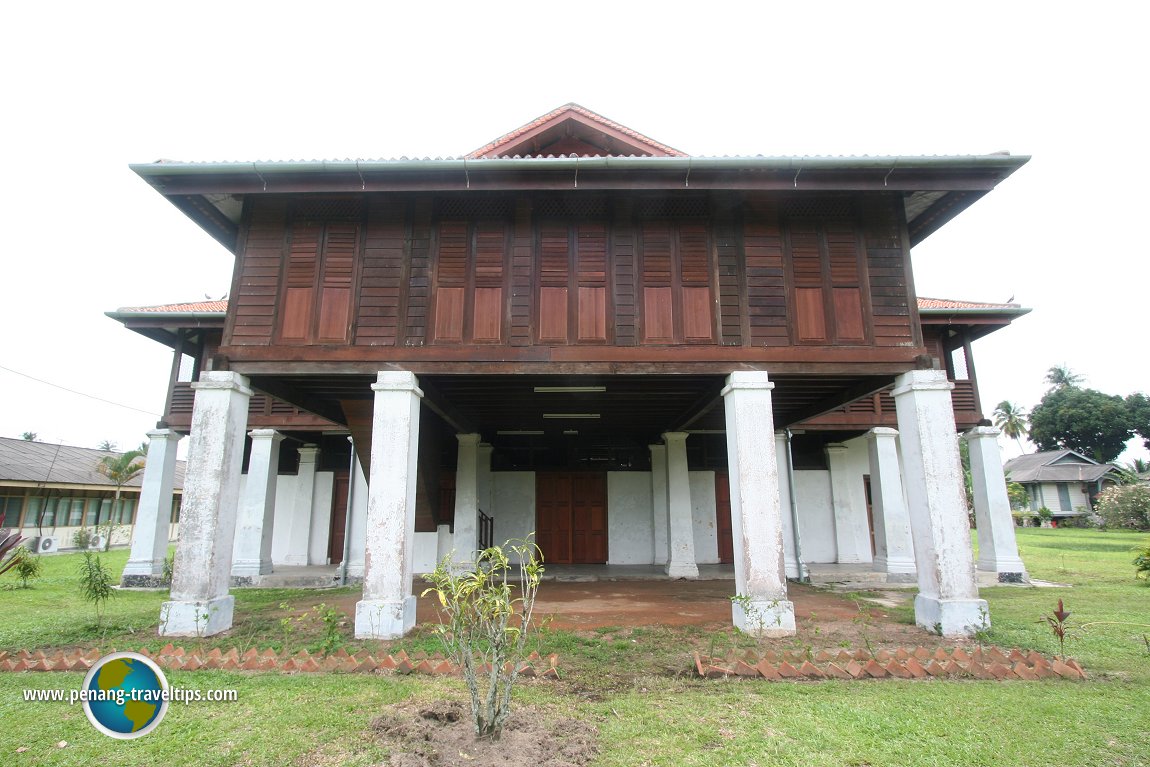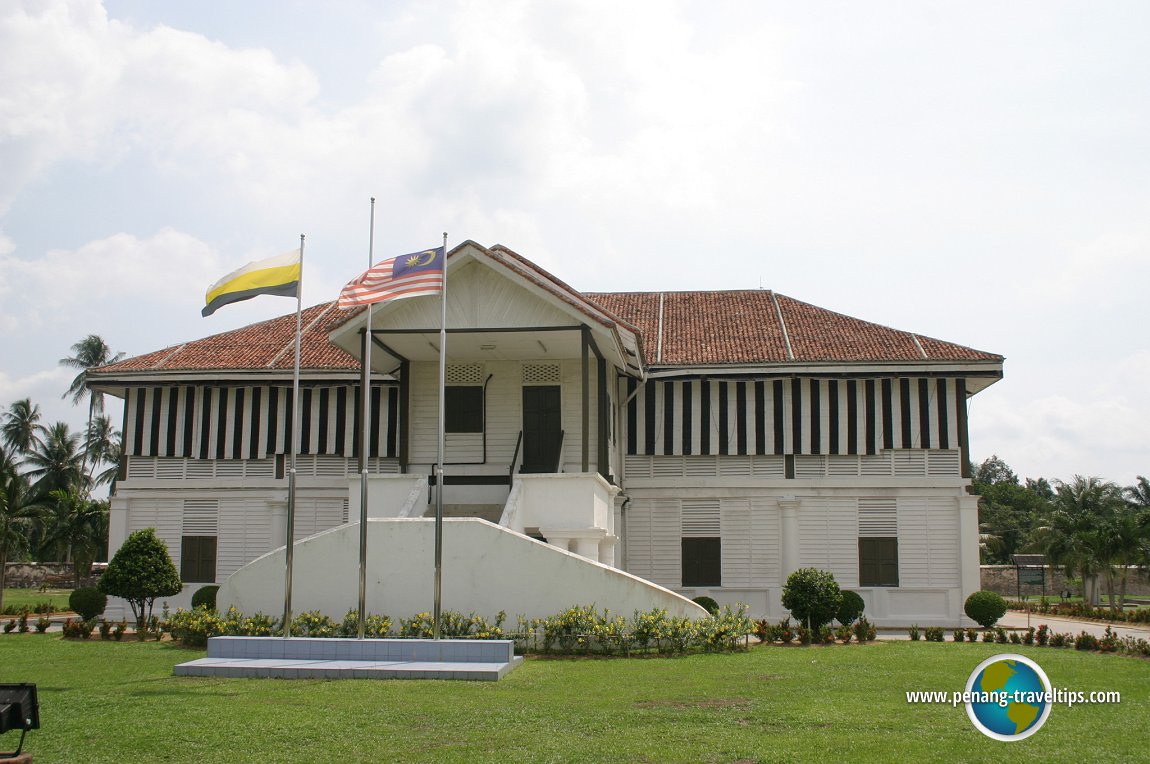 Kota Ngah Ibrahim, Matang (16 April, 2005)
Kota Ngah Ibrahim, Matang (16 April, 2005)
Kota Ngah Ibrahim (GPS: 4.81237, 100.67551) also called Ngah Ibrahim's Fort, and nowadays the Matang Museum, is a Malay fortress in Matang, Perak. It belonged to Ngah Ibrahim, the Mantri of Larut, and son of Che Long Jaafar, the person who discovered tin in Bukit Gantang in Klian Pauh which led to the establishment of the town of Taiping. Originally, Kota Ngah Ibrahim was simply a residence. The discovery was made when Che Long Jaafar found tin encrusted on the feet of his elephant Larut. The elephant lent its name to the Larut region. It was Long Jaafar who brought the first batch of Chinese tin miners to work the tin fields. By the time of Ngah Ibrahim, violent gang warfare had erupted sporadically between the Hai San and the Ghee Hin secret societies over mining lands, making it necessary for him to build a fortified residence.
Ngah Ibrahim was later one of the Malay chieftains found guilty for the murder of the first British Resident of Perak, James Wheeler Woodford Birch. This house was where the 1877 trial of the main perpetrator, Dato' Maharajalela and his follower Si Puntum, was conducted, and they were sentenced to death. Other Malay Chieftains including Sultan Abdullah, Datuk Syahbandar Uda Maamor, Ngah Ibrahim himself and his father-in-law Mohamad Amin were sent into exile in the Seychelles. Sultan Abdullah was given a pardon by the British 16 years later, and he returned to Perak to spend the remainder of his life in Kuala Kangsar.
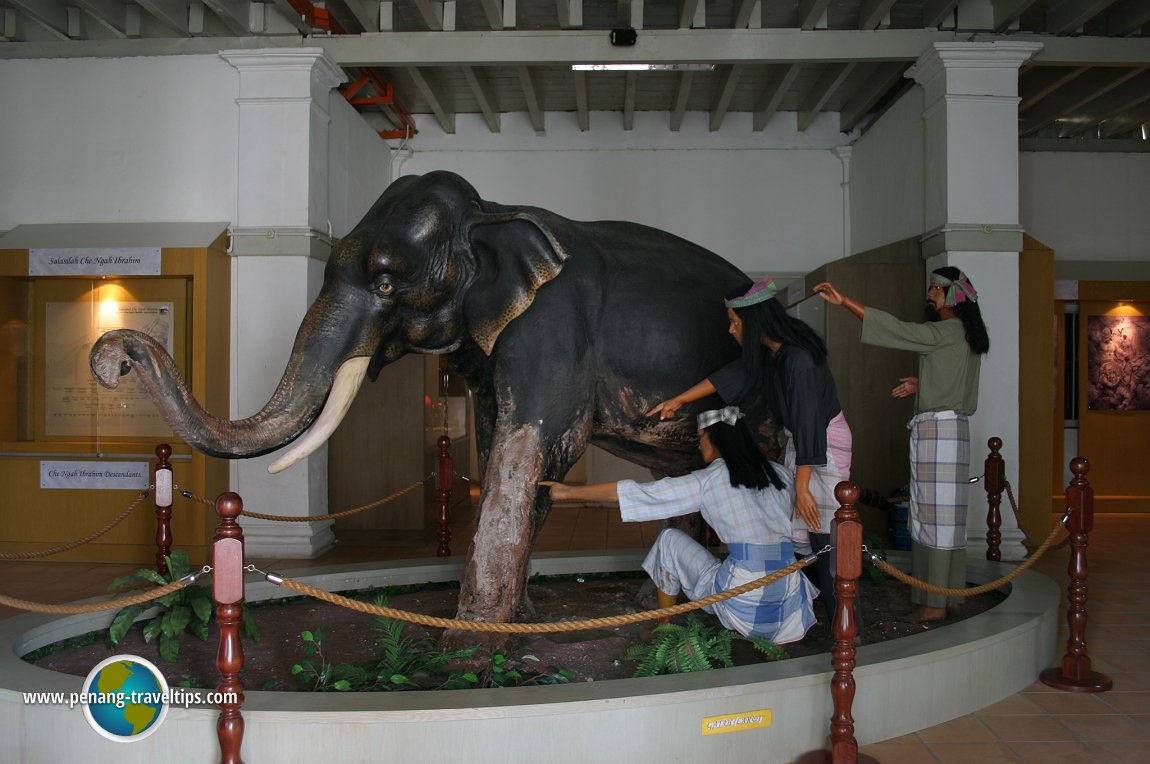 The fortunes of the area began when Malay chieftain (16 April, 2005)
The fortunes of the area began when Malay chieftain (16 April, 2005)
The appeals by Ngah Ibrahim, his father-in-law and Uda Maamoor to return to Perak were rejected by the British. They were sent to Sarawak and then to Singapore. Ngah Ibrahim never got to return to Perak for all his natural life. He died in Singapore on 4 February, 1887.
Kota Ngah Ibrahim once served as the country's first teachers' training college, called Matang College, before it moved to Tanjung Malim becaming known at first as the Sultan Idris Training College, and now as the Sultan Idris Education University. During the Japanese Occupation, it was used as the headquarters of the Japanese army. Today it serves as the Matang Historical Complex.
Today Kota Ngah Ibrahim serves as a museum offering interpretation on the Larut Wars. In addition to items that are related to the tin mining activities of Larut, the galleries also exhibit a mixed bag of items that ranges from farming implements to surveying tools.
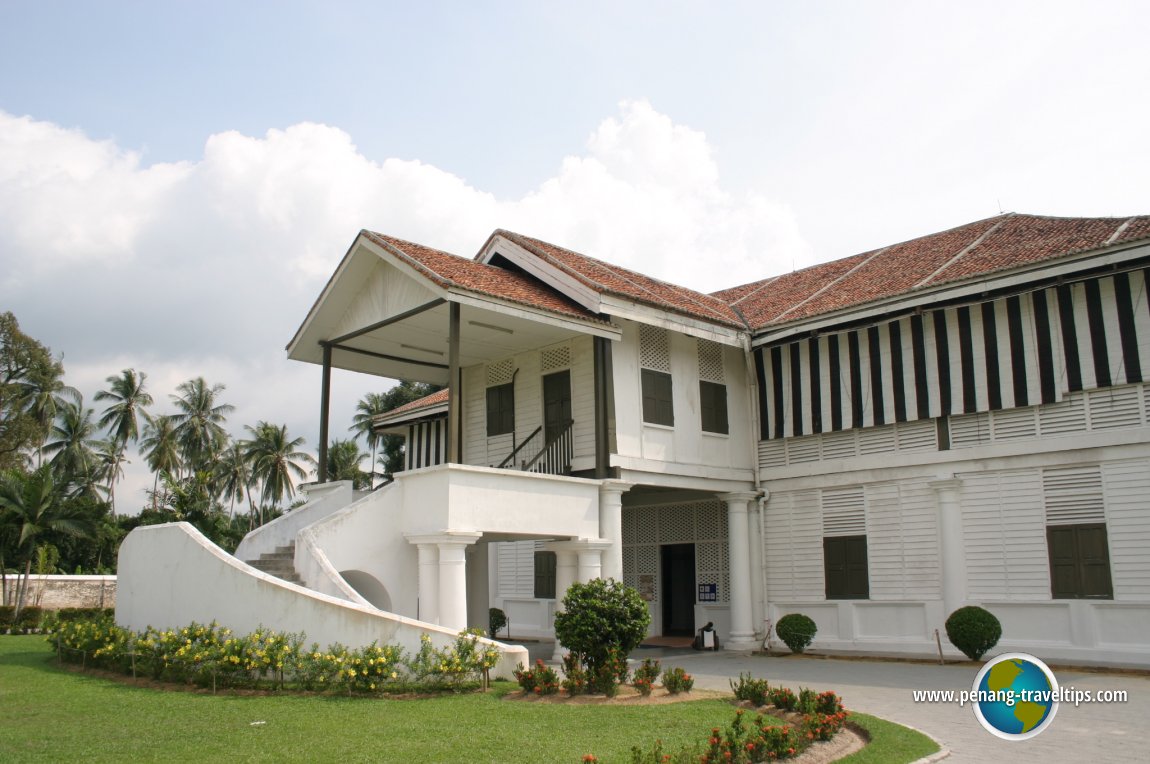 Kota Ngah Ibrahim, Matang (16 April, 2005)
Kota Ngah Ibrahim, Matang (16 April, 2005)
Sights within Kota Ngah Ibrahim
Captain Speedy's Bungalow
DetailsUpdates
16 July 2012: The steed rod sculpture Win Win Situation is erected on Muntri Street in George Town, Penang, to commemorate the prosperity generated by the opening of tin mines in Larut because of Ngah Ibrahim.2007: On 5 September 2006, the remains of Ngah Ibrahim was discovered at the Pusara Al-Junied in Singapore. The remains of his father-in-law Laksamana Mohamad Amin Alang was also discovered in Singapore, at Pusara Aman in Choa Chu Kang. Archaeologists from the National Heritage Department of Malaysia, working with Warees Investment, a subsidiary of the Islamic Religious Council of Singapore, cooperated in exhuming the remains. Ngah Ibrahim's remains was brought back to be buried at Kota Ngah Ibrahim while Mohamad Amin's was interred at the Al-Ghufran Royal Perak Mausoleum in Bukit Chandan, next to the grave of Sultan Abdullah. The remains of Uda Maamor has not yet been found, at time of writing.
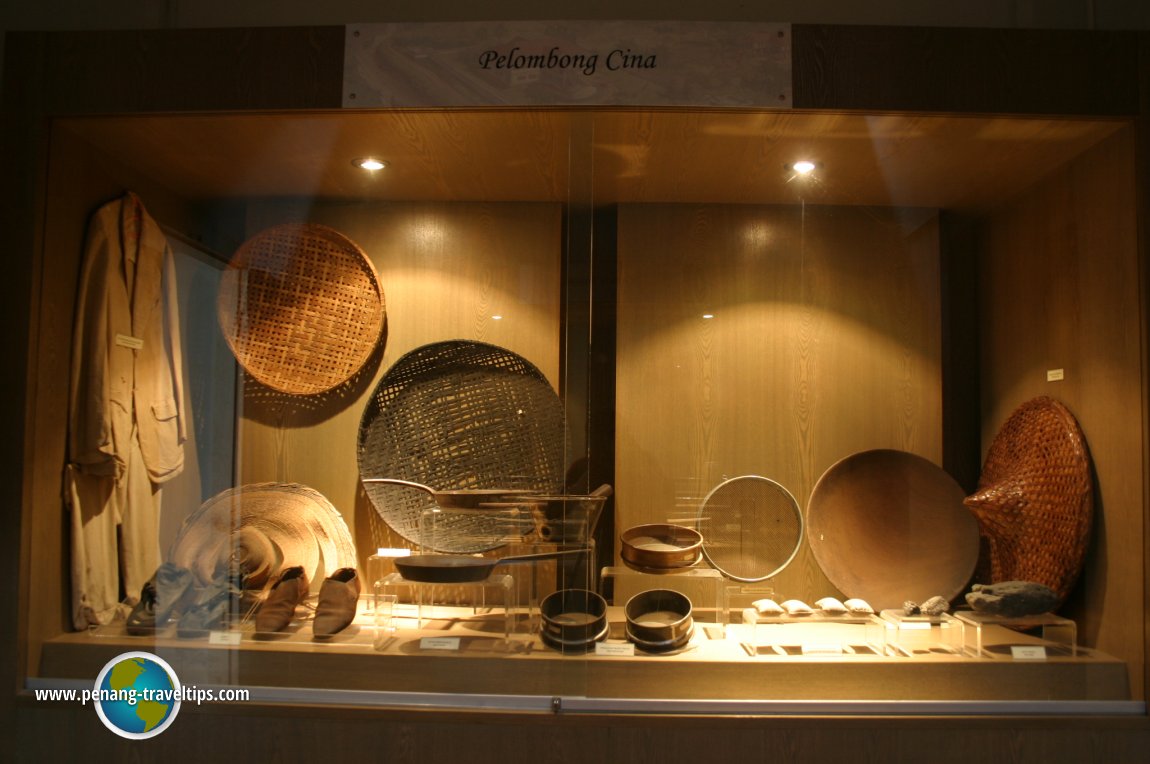 Chinese tin miners' belongings (16 April, 2005)
Chinese tin miners' belongings (16 April, 2005)
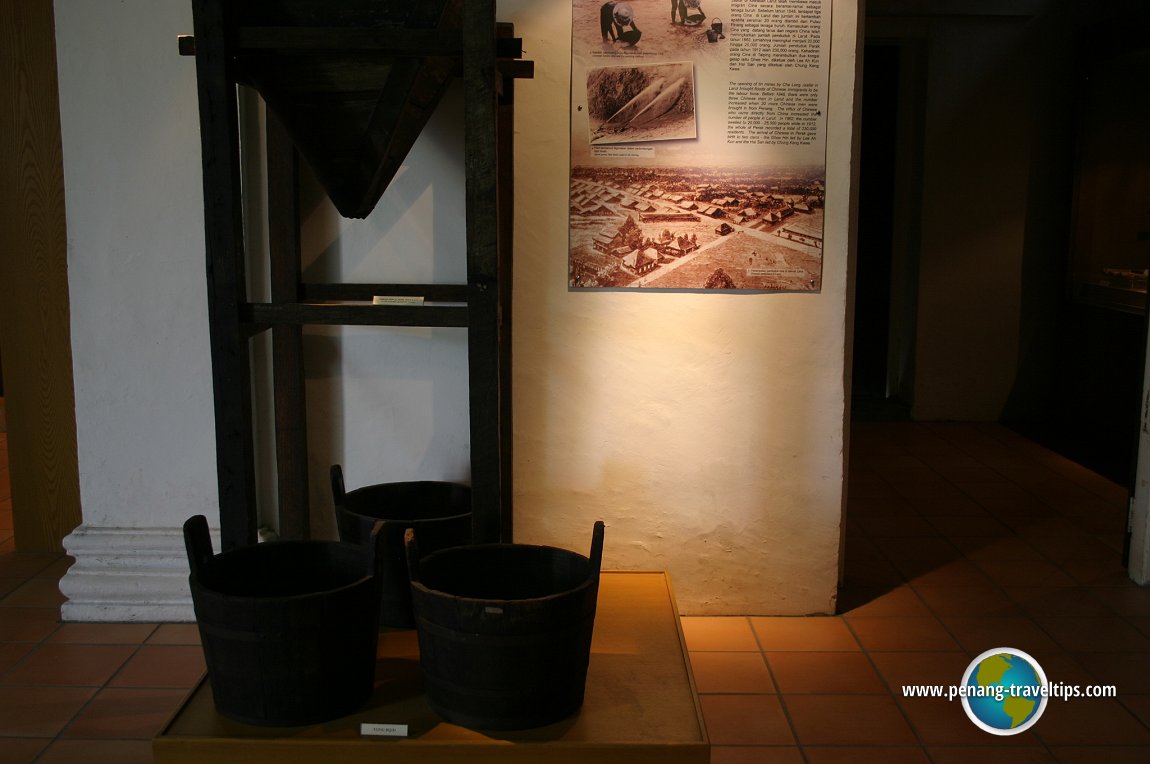 Tin ore buckets (16 April, 2005)
Tin ore buckets (16 April, 2005)
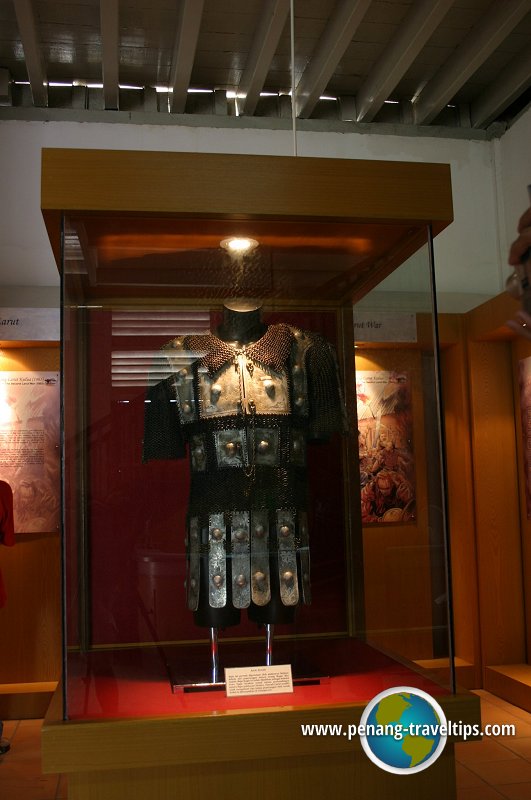 Bugis Armour (16 April, 2005)
Bugis Armour (16 April, 2005)
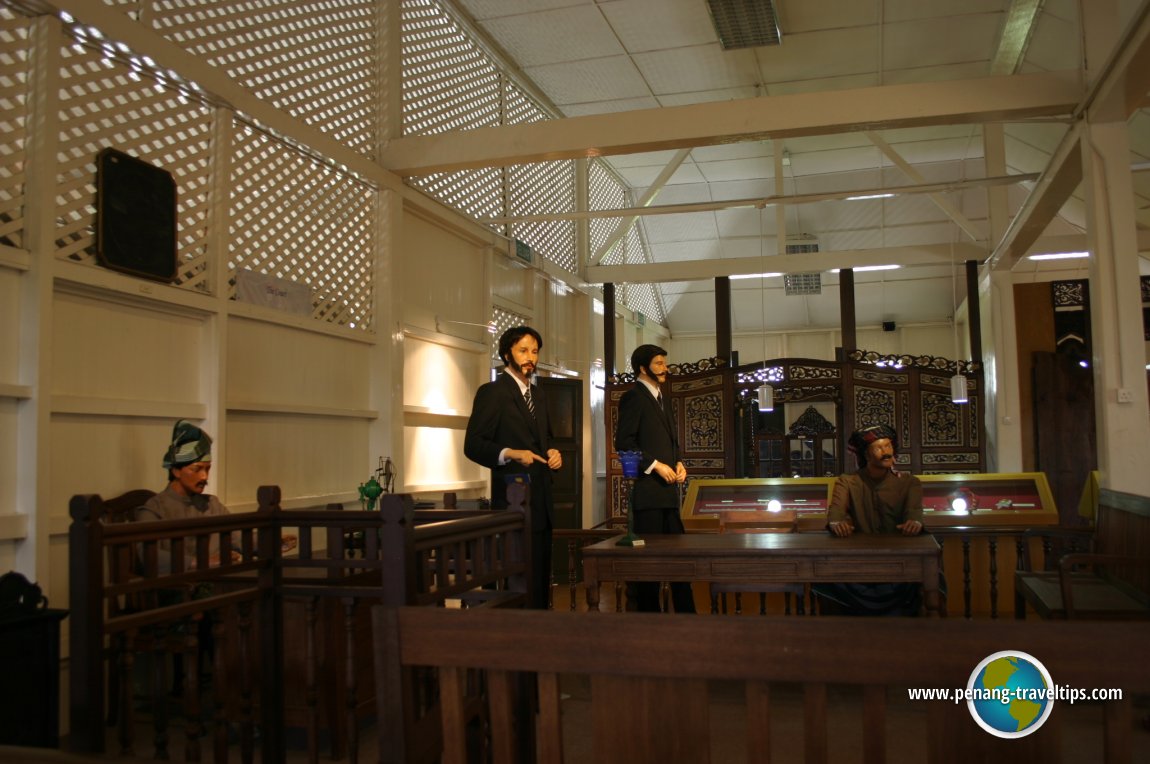 The trial of Ngah Ibrahim, conducted at his residence (16 April, 2005)
The trial of Ngah Ibrahim, conducted at his residence (16 April, 2005)
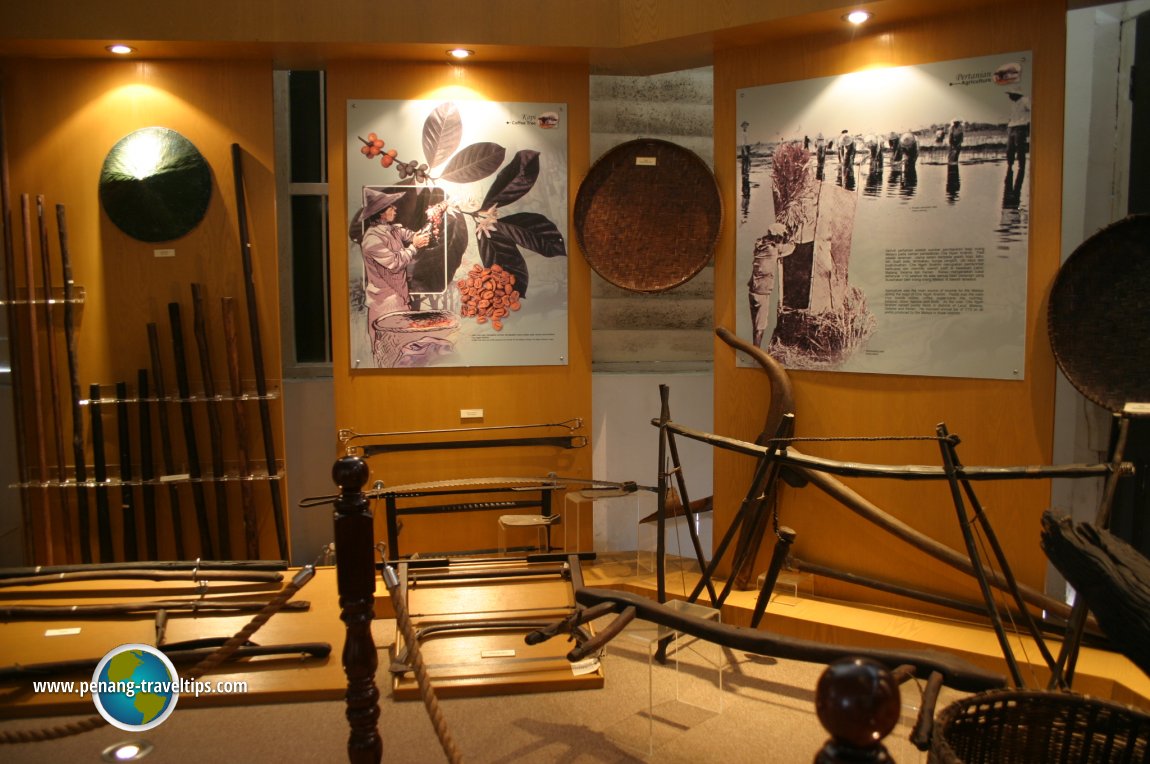 Farming implements among the exhibits at Kota Ngah Ibrahim (16 April, 2005)
Farming implements among the exhibits at Kota Ngah Ibrahim (16 April, 2005)
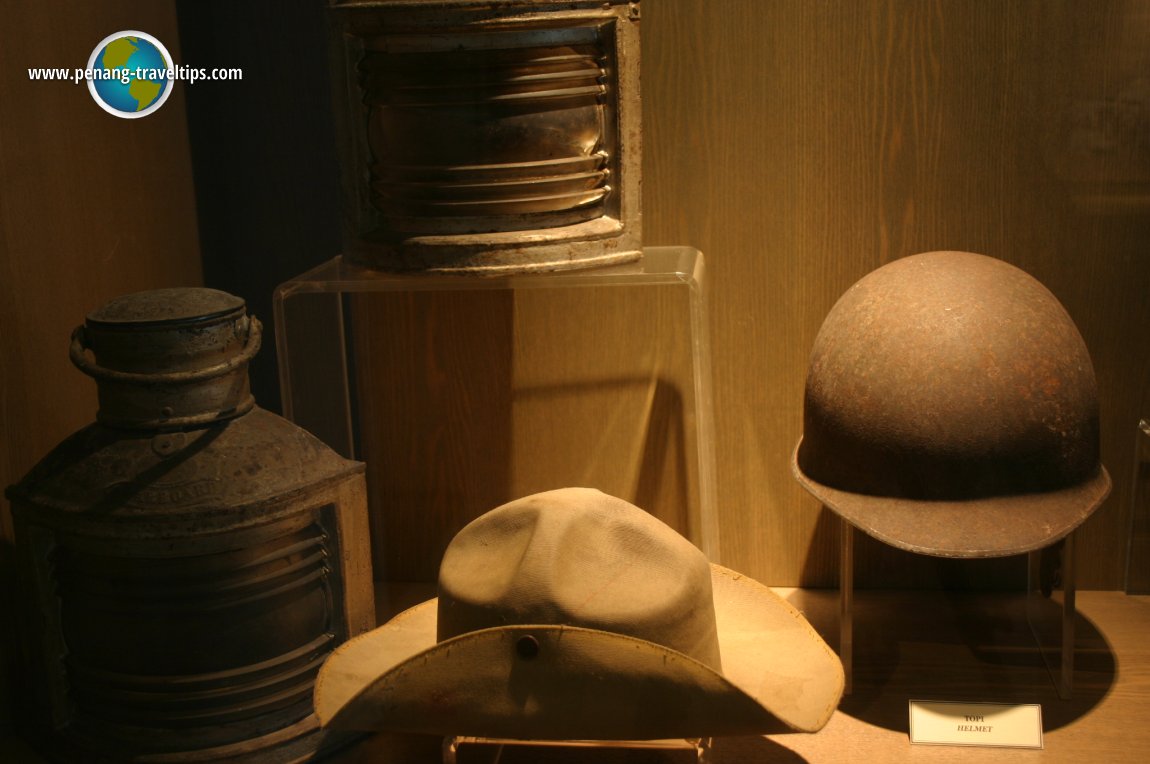 Helmet, hat and various other items exhibited at Kota Ngah Ibrahim (16 April, 2005)
Helmet, hat and various other items exhibited at Kota Ngah Ibrahim (16 April, 2005)
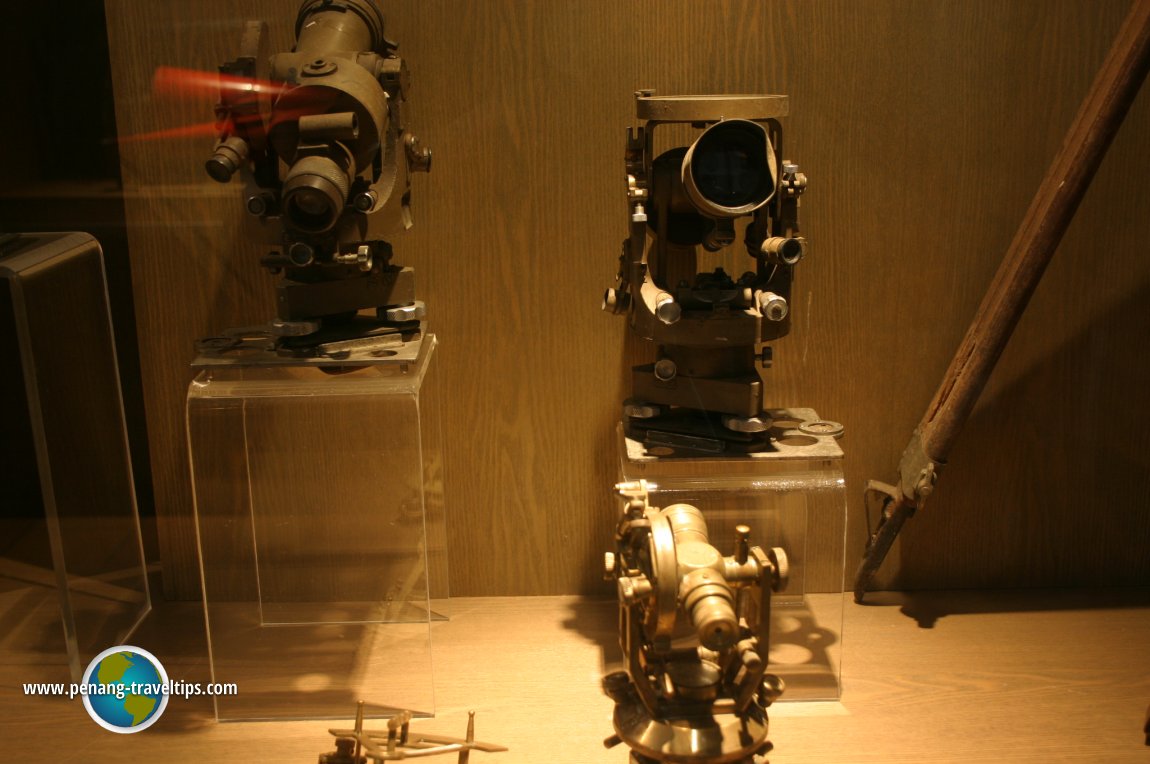 Surveying equipment exhibited at Kota Ngah Ibrahim (16 April, 2005)
Surveying equipment exhibited at Kota Ngah Ibrahim (16 April, 2005)
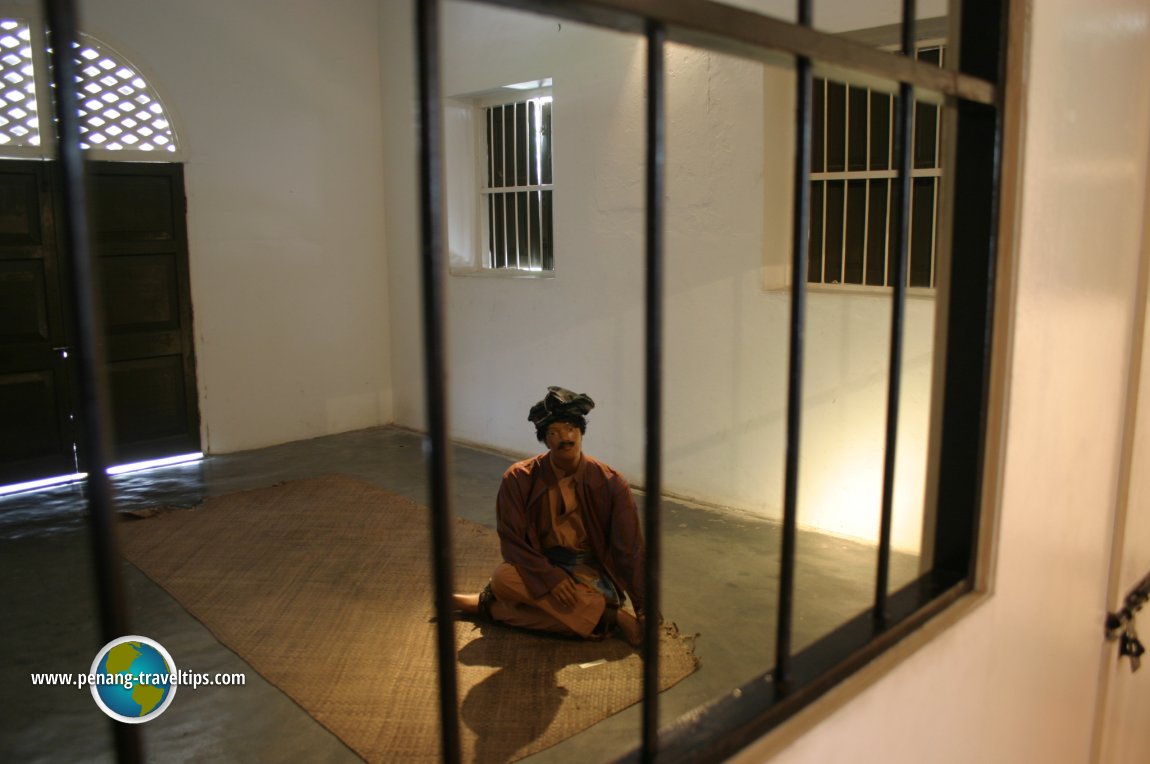 Ngah Ibrahim incarcerated after the murder of JWW Birch. (16 April, 2005)
Ngah Ibrahim incarcerated after the murder of JWW Birch. (16 April, 2005)
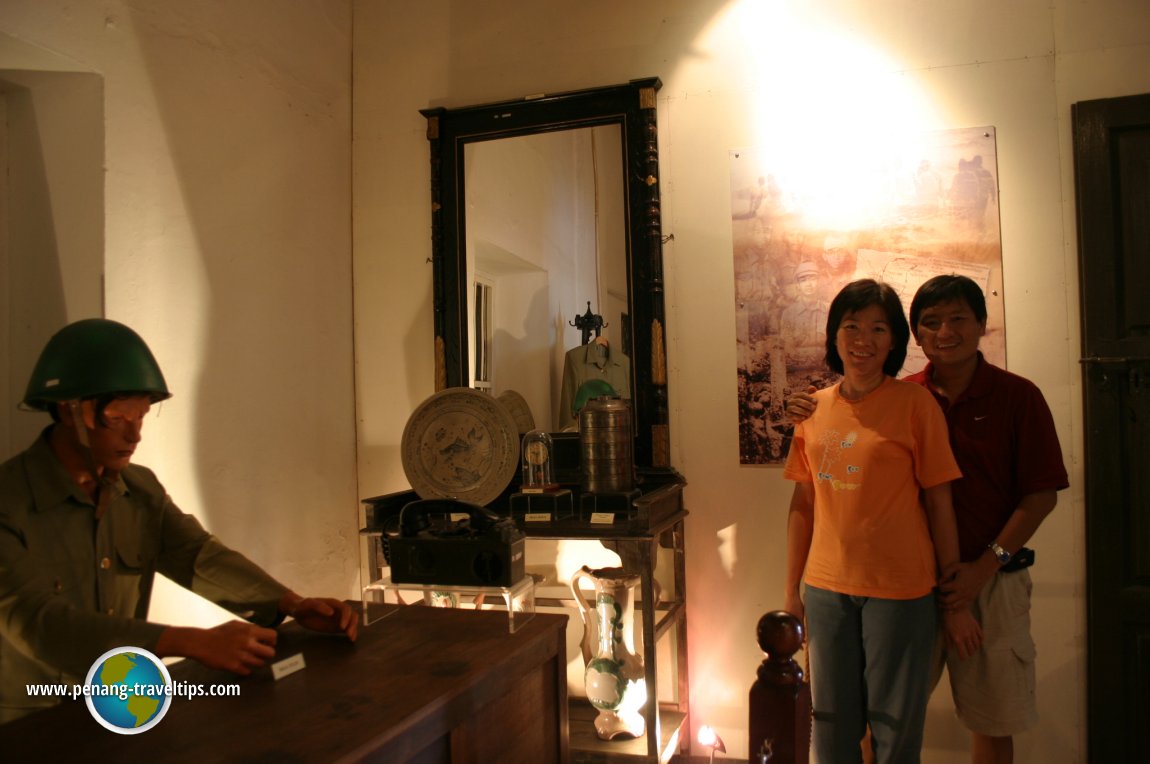 Chooi Yoke and I at Kota Ngah Ibrahim (16 April, 2005)
Chooi Yoke and I at Kota Ngah Ibrahim (16 April, 2005)
Kota Ngah Ibrahim is  on the map of Matang
on the map of Matang
List of Historic Buildings in Matang, Historic Buildings in Perak and Historic Buildings in Malaysia
 Latest updates on Penang Travel Tips
Latest updates on Penang Travel Tips

Copyright © 2003-2025 Timothy Tye. All Rights Reserved.

 Go Back
Go Back